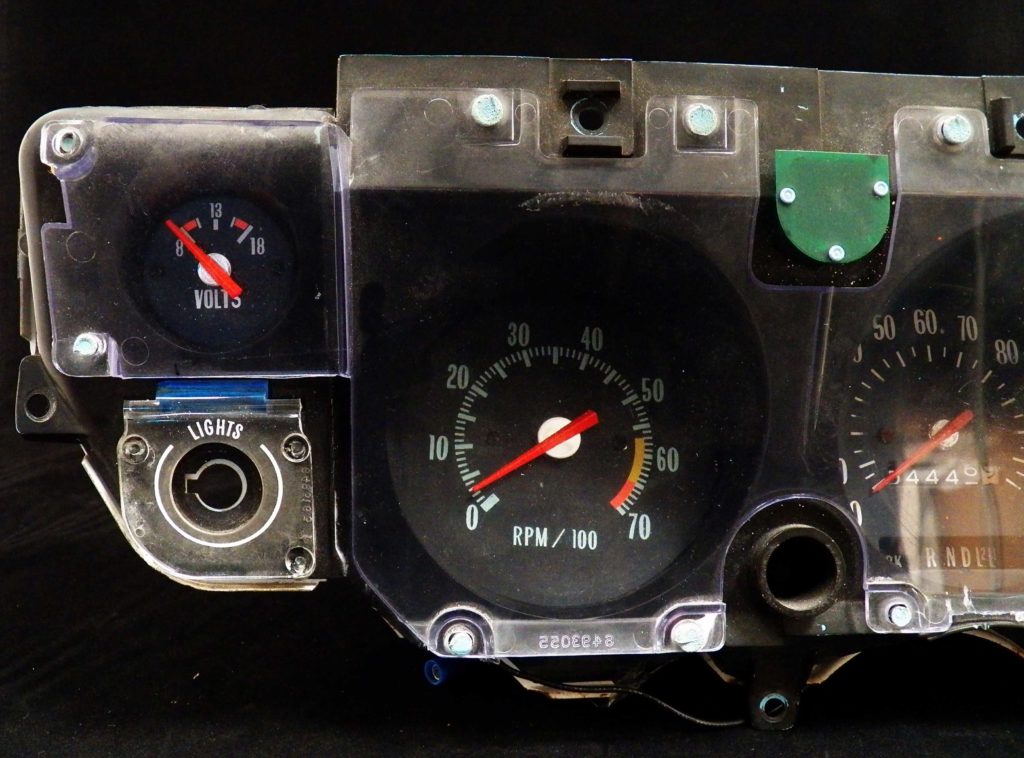Throughout the 1960s and into the 70s, many vehicle gauge packages could be optioned with an ammeter, which gave you a readout of the electrical current (measured in amps) created by your alternator.
While it is handy to know your amperage, this setup often had a big drawback—the gauge was typically fed all of the vehicle’s electrical current, all of the time. This meant the wire was always hot, sometimes literally. If the current was high, if could heat the wire to a level hot enough to melt the wire insulation.
Not only could that create an electrical short, it had a tendency to “cook” the gauge/connections and dramatically reduce your ammeter’s service life. (That’s why a lot of original ammeters don’t work, and why you don’t see ammeters in modern cars.) Plus, if you’ve upgraded to a one-wire alternator or have done any significant modifications to your wiring, it tends to make your stock ammeter pretty much useless.

Shiftworks has got these slick voltmeters that install in the place previously occupied by the ammeter. They measure the strength of the electrical current in volts, which means you’ll still have a good sense of your electrical system health—without any of the drawbacks of the OE ammeter.
Better still, they look exactly like the stock gauges, so no one outside of a concours judge will know it’s not original.
Shiftworks currently makes individual voltmeter gauges for the following applications:
- SIW-S535-G – 1970 Chevy Chevelle/El Camino
- SIW-S535-W – 1971-72 Chevelle/El Camino
You can also get Shiftworks voltmeters in conversion kits (with other gauges) for these vehicles:
- SIW-S507-V – 1966-67 Chevy II/Nova
- SIW-S505-V – 1966-67 Chevy Chevelle
- SIW-S508-VT – 1968 Chevy Chevelle

Anything in the future for Mopar?
Instrument Specialties or other instrument or dashboard restoration shop can make a factory looking gauge. Check out the Feb. 2018 issue of Mopar Action.
I would like to see a Mopar version, as well.
Can I purchase the volt meter alone for the 1969 Chevelle cluster? I don’t need the other gauges because I’m using a factory tach/gauge cluster and upgrading to a one wire alternator, making my ammeter non-functional.
Hey Mike, we reached out to the folks at Shiftworks, and they told us that they only have voltmeters for the 70-72 dash. They don’t currently offer any gauges for the 1969-style cluster. They also recommended a company called Redline Gauge Works that can do a custom ammeter-to-voltmeter conversion, if that sounds like an option you’d like to consider.
Thank you!